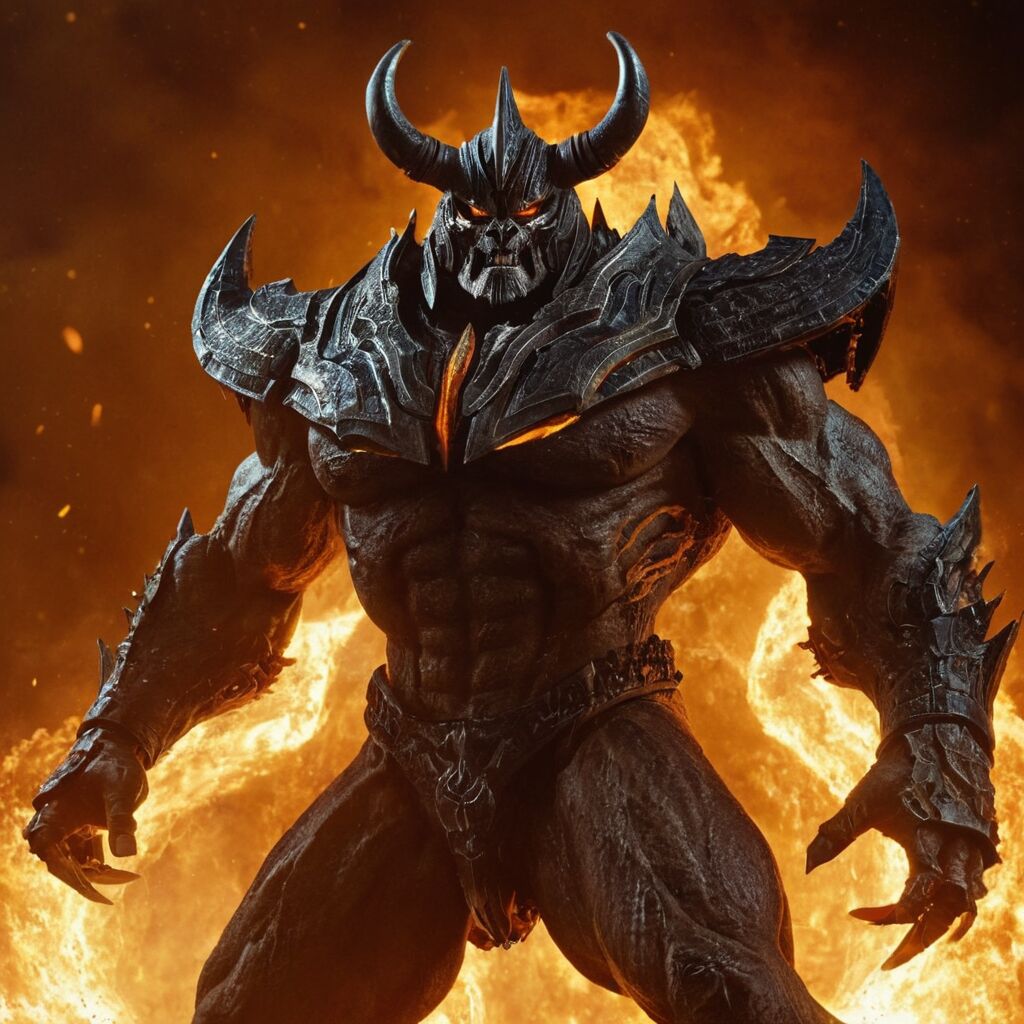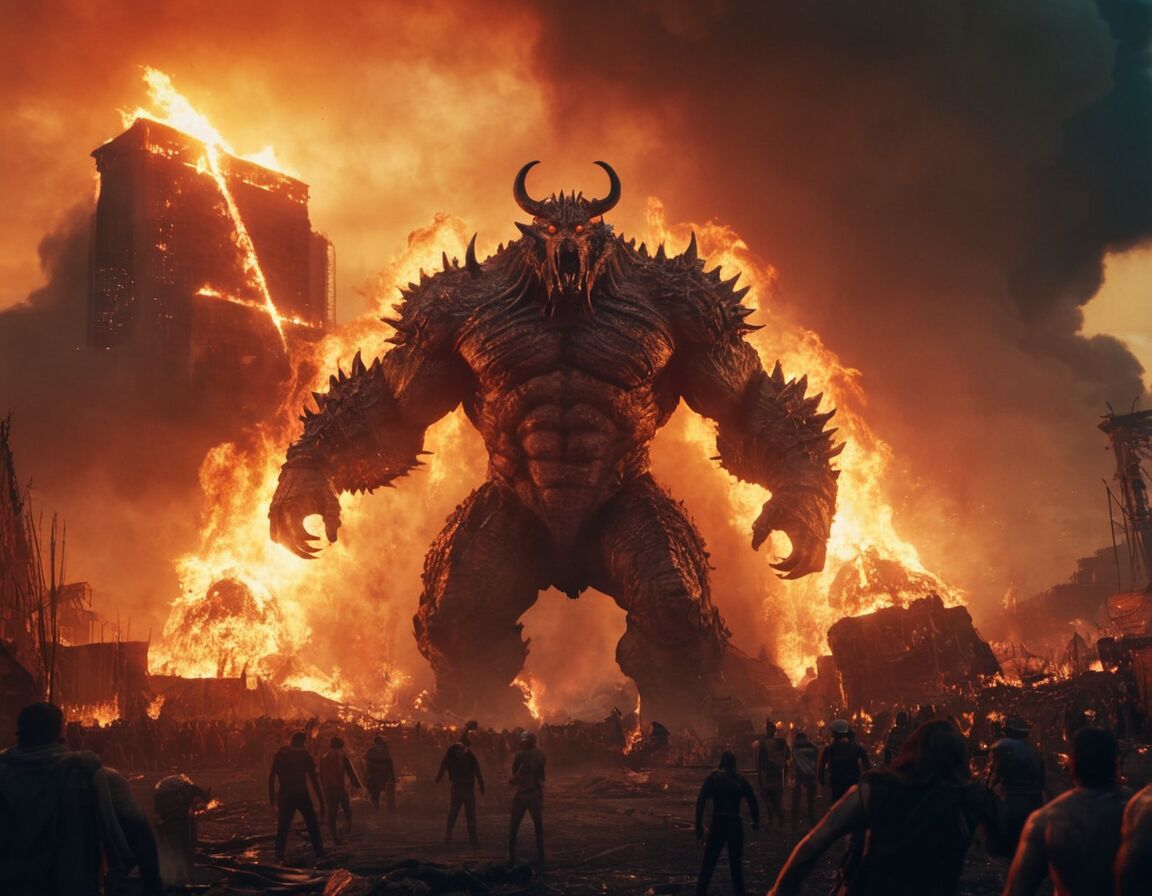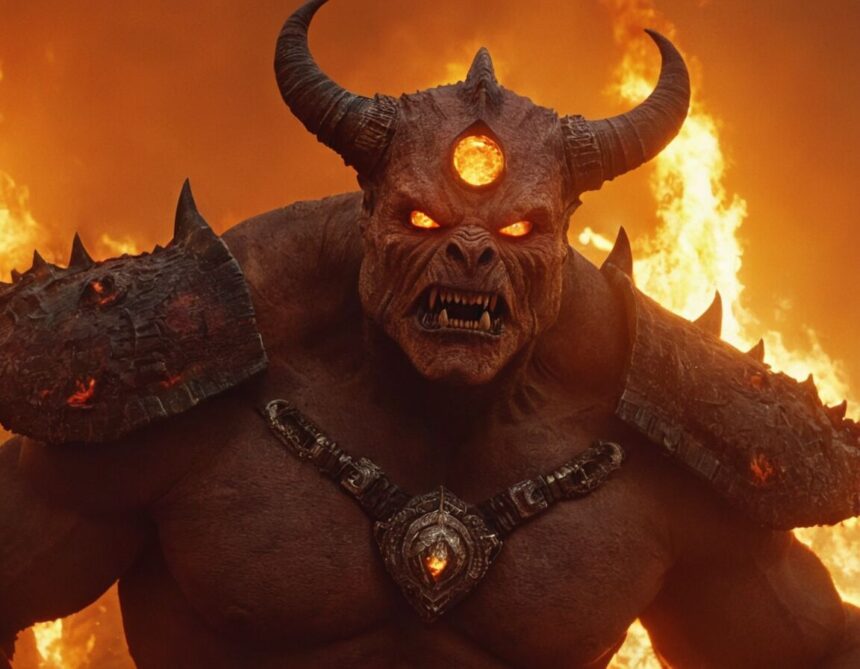The myth of Gorlock the Destroyer has captured imaginations across cultures and generations, evolving from ancient tales into a symbol of chaos and power. This enigmatic figure embodies forces beyond human comprehension, standing as a testament to the enduring allure of monsters rooted in mythology. Exploring the origins and development of Gorlock’s legend reveals how such characters resonate deeply within our collective consciousness.
As the mythos surrounding Gorlock continues to expand through modern media, its influence on popular culture becomes increasingly evident. From fantasy narratives to cinematic portrayals, this iconic character offers a compelling lens through which themes of destruction, rage, and transformation are examined. Understanding the evolution of Gorlock’s legend enriches our appreciation for how legendary figures shape storytelling and cultural identity.
Belangrijkste opmerkingen
- Gorlock oorsprong ligt in oude verhalen, verbonden met natuurlijke krachten zoals vulkaanuitbarstingen en aardbevingen.
- Hij evolueerde van behoeder naar archetype van chaos en vernietiging door culturele en artistieke vernieuwing.
- Gorlock symboliseert oncontroleerbare natuurlijke kracht, stilistisch afgebeeld als woest en angstaanjokkend.
- De mythe beïnvloedt moderne cultuur, inspireert kunst, films en verhalen over kracht en transformatie.
- Zijn verhaal benadrukt thema’s van vernietiging, chaos, hernieuwing en de cyclische kracht van natuurlijke energie.
Origins of Gorlock in Mythology
De oorsprong van Gorlock in mythology are shrouded in mystery, rooted in ancient storytelling traditions that sought to explain natural phenomena and human fears. Early tales depicted Gorlock as a primordial force, embodying chaos and destruction, often linked to volcanic eruptions or earthquakes that symbolized uncontrollable power of nature.
Legend has it that Gorlock was once a guardian spirit, revered by ancient civilizations for its role in maintaining the delicate balance of the earth’s energy. Over time, however, interpretations shifted, portraying Gorlock as an unstoppable destroyer awakened from slumber, representing mankind’s apprehensions about the destructive side of primal forces. These stories were passed down orally, evolving with each generation, reflecting collective anxieties and values.
This mythological figure became a potent symbol of wild nature and unchecked rage, inspiring imaginations across cultures. Its unpredictable essence made Gorlock a compelling subject that transcended regional stories, eventually entering the realm of legend associated with divine punishment and cosmic upheaval. Through these origins, Gorlock’s mythos continues to symbolize profound themes of transformation and inevitable change within human history.
Voor meer informatie: The Life and Achievements of Andy Byron’s Wife: A Closer Look at Her Impact and Influence
Gorlock’s Transformation into a Destroyer Icon

The transformation of Gorlock into an icon of destruction marks a pivotal moment in its mythos, evolving from a primordial force to a symbol of uncontrollable power. Initially regarded as a guardian spirit embodying elemental chaos, Gorlock’s role shifted over time through storytelling iterations that focused on its immense fury and capacity for devastation. This shift was driven by cultural narratives emphasizing the destructive side of natural forces, portraying Gorlock as a being awakened from its slumber to unleash chaos upon the world.
As tales progressed, Gorlock increasingly became associated with concepts of wrath and downfall rather than balance or protection. Artists and storytellers depicted it with imposing features—massive, formidable, and wild—to evoke awe and terror simultaneously. This visual evolution reinforced Gorlock’s identity as a creature that embodies raw, primal rage. The narrative cemented its status not merely as a mythological figure but as an archetype of chaos, representing forces beyond human control that can emerge unexpectedly, leaving destruction in their wake.
Symbolism Behind Gorlock’s Power and Rage
De power and rage embodied by Gorlock serve as profound symbols of natural forces that are both awe-inspiring and terrifying. It represents the unrestrained elements of chaos, illustrating how primal energy can manifest in destructive ways when left unchecked. The sheer force of Gorlock’s rage is often depicted as an unstoppable surge that mirrors volcanic eruptions or violent storms, emphasizing the uncontrollable nature of such forces.
This symbolism extends beyond mere destruction; it reflects deeper themes of transformation and renewal. Just as natural calamities can lead to rebirth or new beginnings, Gorlock’s fury highlights the cycle of devastation followed by regeneration. Its power is not solely a symbol of chaos but also a reminder of the necessity for balance within the cosmos, where order emerges only after chaos has run its course. Ultimately, Gorlock’s strength and fury embody the timeless interplay between creation and destruction, illustrating that beneath even the most destructive outward appearance lies a core of transformative energy.
Chaos isn’t destructive; it’s the fertile ground where new worlds are born. – Carl Jung
Cultural Impact of Gorlock’s Mythos
The myth of Gorlock has had a profound influence on various aspects of modern culture, extending far beyond ancient storytelling traditions. Its image has been adopted and adapted across diverse media, including visual arts, literature, and entertainment. The powerful symbolism behind Gorlock’s rage and destruction resonates with audiences, making it an enduring icon that embodies raw chaos and primal energy.
This mythos has inspired numerous creative works, from comic books to cinematic universes, where Gorlock often appears as a formidable force representing nature’s uncontrollable side. Through these portrayals, the character helps explore themes of power, vulnerability, and the inevitable presence of chaos in human existence. The cultural impact also extends into popular festivals, art installations, and merchandise, reflecting its widespread resonance as a symbol of unyielding strength and transformation.
Furthermore, Gorlock’s legend fosters deeper reflection about humanity’s relationship with natural forces — emphasizing respect, acknowledgment, and the importance of harmony with the environment. As a result, Gorlock’s myth continues to inspire discourse and creativity, influencing how societies conceive of themselves within the larger universe of mythological archetypes and symbolic realities.
Zie ook: Exploring the Life and Work of Imogen Faith Reid: A Rising Star in Contemporary Art
| Aspect | Details |
|---|---|
| Origins of Gorlock in Mythology | Rooted in ancient storytelling, representing primal chaos and natural forces such as earthquakes and volcanic eruptions. Initially revered as a guardian spirit, later depicted as an unstoppable destroyer embodying fears of uncontrollable primal energy. |
| Transformation into a Destroyer Icon | Evolved from a protector to a symbol of chaos, often depicted as a formidable, rage-filled creature. Artistic and narrative developments emphasized its destructive power, cementing its archetype as a force beyond human control. |
| Symbolism Behind Power and Rage | Represents natural force and primal energy, embodying chaos, destruction, but also renewal. Serves as a reminder of the cyclical nature of creation and destruction within the universe. |
| Cultural Impact of the Mythos | Influences modern media, art, and popular culture. Symbolizes raw power and chaos, inspiring creative works and societal reflections on humanity’s relationship with natural forces. |
| Narrative Arc in Media | Featured regularly as a creature of destruction in films, comics, and literature, emphasizing themes of chaos, transformation, and primal strength. |
| Influence on Modern Monster Lore | Contributes to archetypes of chaos and destruction in contemporary storytelling, shaping how monsters are depicted as embodiments of natural and primal forces. |
| Themes of Destruction and Chaos | Core themes include uncontrollable power, primal rage, transformation through chaos, and the balance between destruction and renewal. |
| Future Interpretations and Legacy | Likely to continue inspiring new interpretations in media, art, and cultural discourse, securing Gorlock’s status as an enduring symbol of chaos and power. |
Narrative Arc in Popular Media

Within modern entertainment, Gorlock’s character has become a recurring element in stories that emphasize primal chaos and unstoppable force. This mythic creature often appears as an embodiment of destruction, frequently challenging protagonists who seek to understand or tame its power. Its role in various narratives highlights the tension between order and disorder, positioning Gorlock as both a threat and a catalyst for transformation.
In many films, comics, and novels, Gorlock is depicted during moments of great upheaval, symbolizing nature’s uncontrollable aspects that cannot be subdued by mortal efforts. These portrayals underscore the idea that chaos can serve as a mechanism for renewal, especially when pivotal characters confront their limits. The visual depiction of Gorlock—massive, wild, and terrifying—reinforces its role as an archetype representing raw, primal energy that defies containment.
As a result, Gorlock’s appearances foster themes centered around destruction en rebirth, illustrating how powerful forces, despite their frightening nature, drive evolution within fictional worlds. Through repeated use across different media, Gorlock’s mythos continues to evolve, shaping a narrative tradition where chaos ultimately leads to change, growth, and new beginnings.
Ook interessant: Exploring Unblocked Games 6x: The Ultimate Resource for Online Gaming Enthusiasts
Influence on Modern Monster Lore

The myth of Gorlock has significantly shaped contemporary monster stories and archetypes, influencing how creators depict forces of chaos and destruction. Its iconic status has inspired a new generation of creatures that embody raw primal energy, emphasizing uncontrollable power or rage. This influence is evident across various media, from comic books to blockbuster films, where monsters are often portrayed as elemental beings representing nature’s most ferocious aspects.
What sets Gorlock apart is its ability to symbolize broader concepts such as transformation, renewal, and the cycle of chaos leading to growth. Artists and storytellers have adapted these themes to construct characters who challenge protagonists with their destructive capabilities. Such portrayals emphasize that monsters are not merely villains but allegories for natural forces beyond human control. This perspective encourages deeper storytelling layers centered around confronting chaos rather than avoiding it.
Overall, Gorlock’s mythos continues to foster rich creative interpretations that resonate with audiences. By encapsulating fundamental themes of primal power, it remains a vital influence on modern creature design and narrative development in the realm of fantasy and horror genres alike.
Themes of Destruction and Chaos
The themes of destruction and chaos are central to the mythos surrounding Gorlock, embodying raw, primal forces that evoke feelings of both fear and awe. These elements serve as powerful symbols revealing how uncontrollable energy can reshape entire landscapes and societies when left unchecked. The depiction of Gorlock often emphasizes its capacity for unleashing devastation on an unimaginable scale, highlighting nature’s ability to bring about sudden upheaval. Such destruction is not portrayed simply as evil or random violence; instead, it reflects larger concepts of transformation through turmoil.
Additionally, chaos in this context underscores the unpredictability inherent within natural and cosmic systems. When Gorlock appears, it challenges the notion of stability, reminding us that order is often fragile and temporary. This relentless force illustrates that beneath surface appearances, beneath civilization’s veneer, lies an undercurrent
of wild energy waiting to emerge. Consequently, these themes encourage reflection on how destruction can act as a catalyst for renewal, emphasizing that disarray can pave the way for new beginnings while also underscoring the importance of balance within the universe.
Future Interpretations and Legacy
The legacy of Gorlock the Destroyer is poised to grow and evolve as new creative works continue to draw inspiration from its mythos. Future interpretations are likely to deepen the character’s complexity, blending traditional themes with contemporary storytelling techniques. Artists and writers may explore its origins further or reinterpret its symbolism within different cultural or technological contexts, ensuring that Gorlock remains a relevant figure in popular culture.
As cinematic and literary landscapes expand, it is probable that Gorlock will be depicted through varying artistic styles, ranging from hyper-realistic visuals to abstract representations. Such diversity allows for fresh perspectives on its role as an emblem of primal chaos and uncontrollable power. Innovative uses of digital media and special effects could amplify its presence, making it even more impactful for new audiences.
Additionally, the mythos surrounding Gorlock might be integrated into broader narratives about natural forces and humanity’s relationship with destruction. Its enduring influence could serve as a touchstone for discussions around resilience and transformation amid upheaval. Ultimately, Gorlock’s legend is expected to remain strong, continuously inspiring creators and sparking curiosity across generations, cementing its status among legendary figures of chaotic forces.
FAQ: Uw vragen beantwoord
What are some modern adaptations of Gorlock in popular culture?
How do artists typically visually depict Gorlock to evoke both awe and terror?
Are there any rituals or festivals inspired by Gorlock’s mythos?
What is the significance of Gorlock’s association with cosmic upheaval?
How might Gorlock’s legend influence environmental perspectives?
Referenties:









